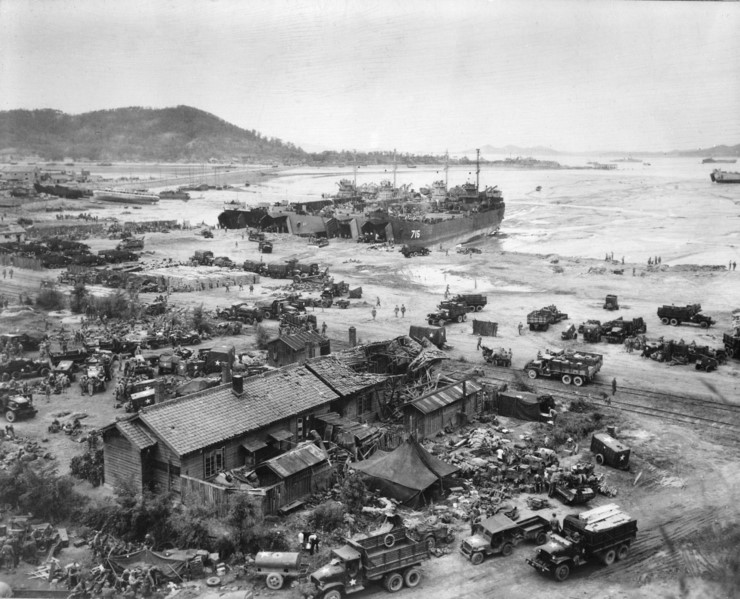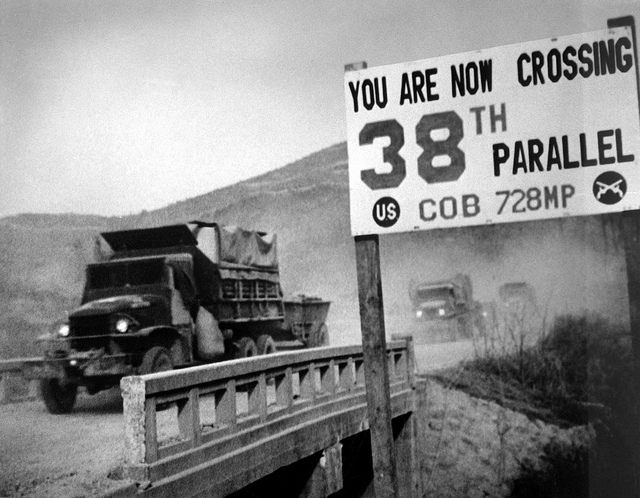Seventy years on, the Korean War still resonates

Commemorations in South Korea yesterday, and elsewhere around the world, marked the 70th anniversary of the signing of the Korean War armistice at Panmunjom on 27 July 1953. Today, amid the war in Ukraine and tensions in East Asia that could flare into hostilities, the lessons of the Korean conflict are worth close re-examination.
After three years of bloody and exhausting fighting, the armistice brought a fragile peace. With nuclear weapons having emerged as part of the deterrent suite of capabilities, the war was contained, in part resembling the front lines of World War I.
This line of demarcation established after a long and relatively static phase from mid-1951 onwards between opposing forces would become known as the DMZ—the demilitarised zone. The front line between US-aligned forces under the United Nations Command and the forces of the North Korean Army and ‘volunteers’ from the People’s Republic of China would become the de facto border between North Korea and South Korea.
The war had been fought to a stalemate roughly along the 38th parallel, its original starting point. But the 21-member UN coalition had suffered almost 800,000 military casualties—dead, wounded and missing. The vast majority—more than 600,000—came from South Korea. Meanwhile, almost a million South Korean civilians died and up to 1.5 million North Koreans and Chinese died. The United States suffered 36,574 dead and, of the more than 17,000 Australians who served there, 1,500 were casualties, including 340 killed. What this shows is that far from being a police action, it was a devastating war and one of the most important conflicts, politically and military, of the 20th century.
For Australia, the conflict set a pattern for much of the rest of the Cold War and beyond. In contrast to World War II, when Australia managed to muster (in land-power terms alone) 14 divisions as part of its land forces and deployed four or five of them at any one time, in the Korean War a much more carefully calibrated force contribution was made. In June 1950, Australia committed land, sea and air forces just as they were from the residual elements that had occupied Japan from 1946 to 1950. In time, two infantry battalions deployed (one on rotation) as part of a British Commonwealth infantry brigade, along with a squadron of fighter aircraft and a selection of Australian warships, including an aircraft carrier, HMAS Sydney.
The armistice still stands 70 years on, albeit with occasional disruptions. A few points are worth noting.
First, the United States was indispensable to the defence of Korea. An international force could not have been mustered to defend the south without US resolve to make it happen. But the North Korean leader, Kim Il-sung, likely would not have been confident of invasion success had it not been for US Secretary of State Dean Acheson’s January 1950 address to the National Press Club in Washington. There he declared, in effect, that Korea was beyond the limits of US security guarantees. Kim saw that as a sign of weakness that he could and did exploit.
Second, President Harry Truman acted, against a backdrop of public horror at the naked aggression. Visceral public sentiment hadn’t featured in the equation behind Acheson’s manifesto. Truman sent General Douglas MacArthur to rescue the situation, and his forces arrived just before the entire Korean peninsula was completely overrun. After consolidating the Pusan perimeter, his amphibious lodgement at Inchon, near Seoul, led to the unravelling of the North Korean army and the fateful decision to not only cross into North Korea but advance right up to the Yalu River bordering China.
With supreme confidence, and a belief that he was entitled to use nuclear weapons, MacArthur was prepared to stare down the Chinese. But Truman though better of that and replaced MacArthur rather than allow him to cross the nuclear threshold. That precedent still holds. No nuclear weapon has been used in anger since the bombs dropped on Hiroshima and Nagasaki in 1945. It is difficult to imagine a scenario where either side would choose to break that now nearly 80-year-old taboo—one that even Russia’s Vladimir Putin has been wary of breaking in his war in Ukraine.
Third, the armistice is just that. It is not a formal peace treaty. And with North Korean ballistic missile firings in recent times becoming more tried, reliable, longer in range and more sophisticated, coupled with Pyongyang’s continued bellicose rhetoric, the prospects of war remain alive. Most don’t realise that Australia retains significant and consequential security obligations there as part of the United Nations Command. Australia could be called to commit air and maritime forces at short notice, and Australian land forces could be in demand if the situation deteriorated significantly.
Fourth, today, while the Korean peninsula remains fraught, there are other flash points in East Asia that are equally, if not more, worrying. These include the heightened tensions over what Japan calls the Senkaku Islands and China calls the Diaoyu Islands in the East China Sea just northeast of Taiwan. There, Chinese maritime militia, armed fishing fleets and coastguard vessels have persistently harassed, intimidated and gradually worn down Japanese capabilities, if not Japan’s resolve to resist the Chinese encroachment.
Beijing’s approach of salami slicing—of engaging in persistent harassment to erode resolve and yet avoiding crossing a kinetic threshold into open warfare—appears akin to the ancient Chinese game of Go, in which players add pieces to the board and seek to flip rather than remove or destroy the pieces of their opponents. Clearly, the People’s Liberation Army is preparing for the possibility of war. But I would contend that its martial capability is informed by the vulnerabilities of China’s geostrategic challenges, its ‘Malacca dilemma’, and its reliance on trade and investment.
Then there are the contested claims in the South China Sea. Despite the 2016 arbitral tribunal ruling discounting the legitimacy of China’s claims over the territory within its so-called nine-dash line, it continues to harass and intimidate the contiguous states (Vietnam, Indonesia, Malaysia, Brunei and the Philippines) in their territorial waters and exclusive economic zones as recognised under the UN Convention on the Law of the Sea.
Finally, there’s the prospect of war over Taiwan. Here the echoes of what happened in Korea appear the most significant. Uncertainty over US resolve and support appears to have encouraged North Korea to invade the south in 1950. Popular responses drove Truman to change his policy and rapidly deploy MacArthur and his forces to defend the south. Allies and partners were promptly called upon to help in ways that appeared unimaginable only weeks earlier.
No one knows what the future holds, and history does not repeat. But its rhyming points to the utility of closely considering again the experience in Korea 70 years ago.



